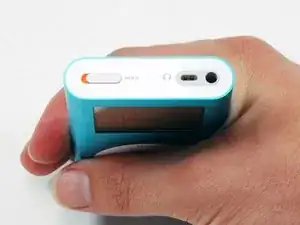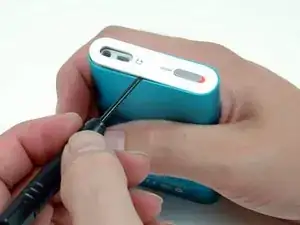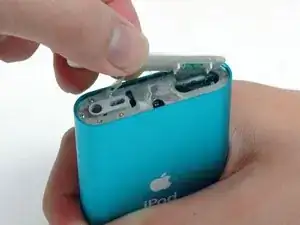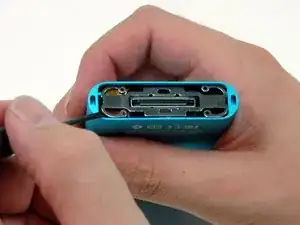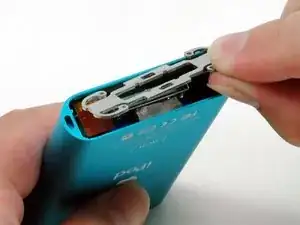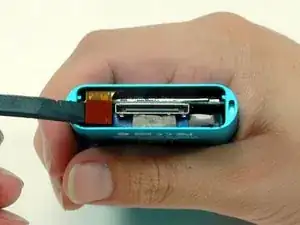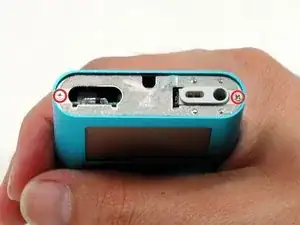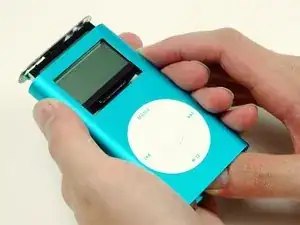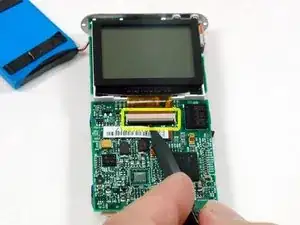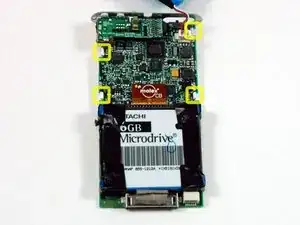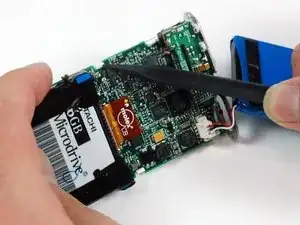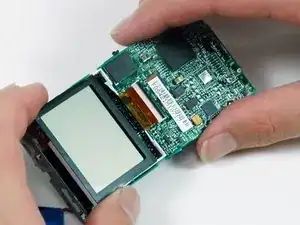Introduction
Replace a cracked or faulty display.
Tools
Parts
-
-
Carefully insert a small flathead screwdriver or Jimmy in the seam between the metal casing and white plastic top. Use the screwdriver to pry up the white plastic top bezel. Be careful not to damage the soft plastic with your screwdriver.
-
To make this job easier, heat up the adhesive with a hairdryer on low heat for a few seconds.
-
-
-
A small pair of snap ring pliers is the easiest tool to remove the metal retaining bracket.
-
You can also use a flathead screwdriver to pry out the metal retaining bracket beneath the bottom bezel as shown. You can free the bracket by first pushing in the metal arms on the corners and then lifting the bracket.
-
-
-
Use a spudger or the tip of your finger to carefully disconect the orange click wheel ribbon from the logic board.
-
-
-
Carefully slide the iPod out of its casing by pushing on the logic board near the bottom edge of the click wheel.
-
-
-
After pushing the logic board out sufficiently, gently grasp the logic board on either side of the display, and continue to slide the iPod out of its casing.
-
-
-
Use a spudger to flip up the black plastic tab holding the orange display ribbon in place. The black tab will rotate up 90 degrees, releasing the ribbon cable.
-
-
-
Note the location of the four white plastic tabs securing the display to the logic board. These tabs must be released before the display can be removed.
-
-
-
Use a spudger or your finger to free the four white plastic tabs indicated in the previous picture.
-
To reassemble your device, follow these instructions in reverse order.
One comment
Hey when I tried to lift up the tab ,it came out flying what to do now ?
Vatsal -

